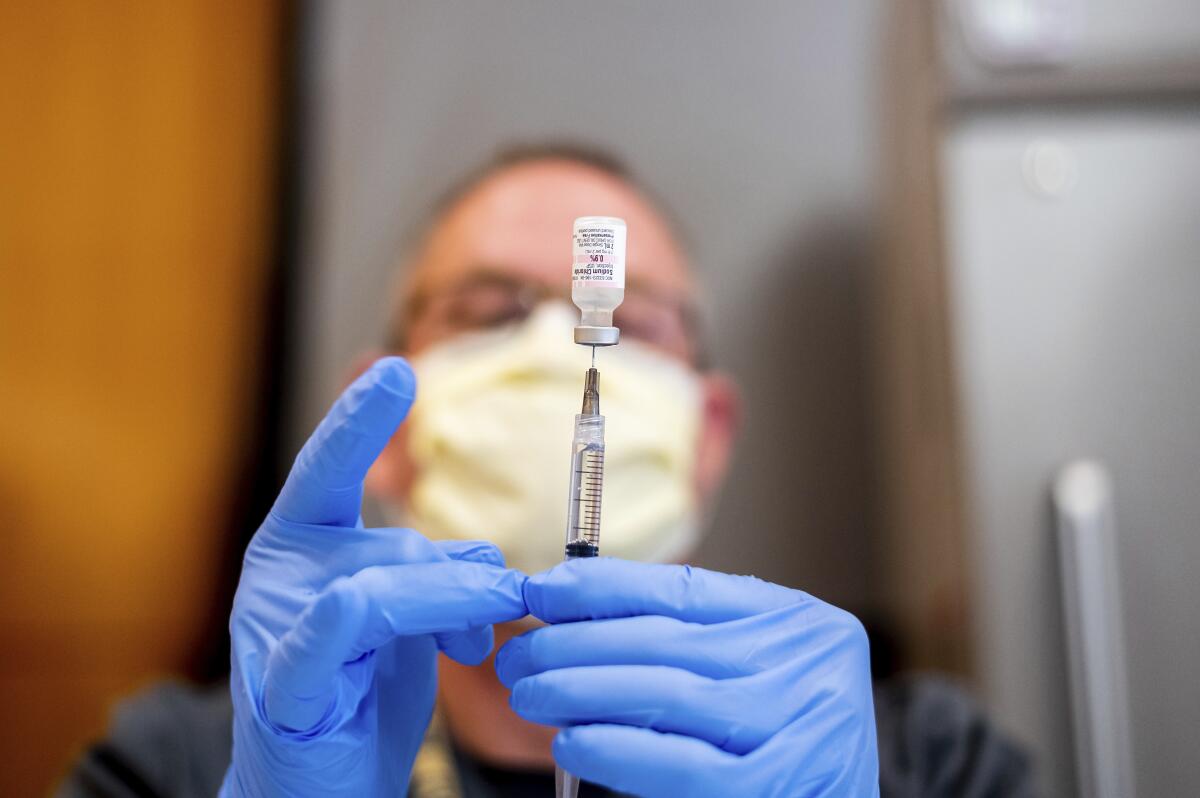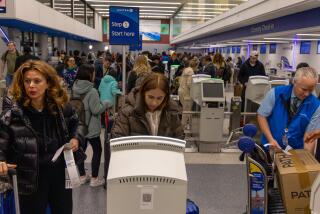Coronavirus variant found in Denmark is increasingly common in Northern California

A strain of coronavirus first identified in Denmark is becoming increasingly common in hospitals and jails in Northern California and the Bay Area, according to the state’s Department of Public Health.
The variant, L452R was identified in viral genomic sequencing of outbreaks, including one that began Christmas Day in Kaiser’s San Jose Medical Center that infected 15 patients and at least 74 staffers. One Kaiser staffer has died. Ten of the infected people were found to have the variant, according to a Kaiser spokeswoman.
The variant was also found in some patients in several large outbreaks where the rate of infection among those who were exposed was very high, according to a Santa Clara County Public Health Department news release.
But scientists are not yet prepared to say whether this variant spreads more rapidly than others.
Still, its increasing prevalence “reinforces the need for all Californians to wear masks and reduce mixing with people outside their immediate households to help slow the spread of the virus,” said Dr. Erica Pan, an epidemiologist with the California Department of Public Health.
Santa Clara County Health Officer Sara Cody said the variant’s role in the recent outbreaks is “a red flag and must be investigated further.”
“This virus continues to mutate and adapt, and we cannot let down our guard,” she added.
The variant is also increasing in specimens tested in labs.
Between Nov. 22 and Dec. 13, scientists tested samples from 185 coronavirus patients and found the L452R variant in about 4%.
In a subsequent time period, the presence of the new variant shot up, appearing in more than 25% of cases between Dec. 14 and Jan. 3.
More than 90% of the samples came from Northern California, but the variant has also been found in the southern part of the state, including Los Angeles, Orange, San Bernardino, San Diego and Riverside counties.
It’s too soon to know how prevalent this strain is statewide because genomic sequencing is not performed with equal frequency in all places.
More research is needed to determine if the variant is resistant to vaccines, said Charles Chiu, a virologist and professor of laboratory medicine at UC San Francisco.
But preliminary data raise concerns. The variant’s three mutations are in the spike-shaped protein, which the virus uses to infect cells — the same area targeted by the two vaccines available in the U.S., Chiu said.
This variant is different from B.1.1.7, which was first detected in the United Kingdom and is up to 70% more transmissible than earlier versions of the virus. L452R was first found in Alameda County as early as May and had been a rarity until November, Chiu said.
California officials are working with the federal Centers for Disease Control and Prevention, local public health departments and laboratory sequencing partners to learn more about the variant, including how it spreads.
This week, California surpassed more than 3 million confirmed coronavirus cases and 35,000 deaths. There are signs the pandemic is starting to plateau in the state, but a post-holiday spike is still overwhelming hospitals.
More than 1.5 million shots of the two-dose vaccines have been administered in California.
Healthcare workers, residents and employees of nursing facilities and people 65 and older are now eligible, but supplies of the vaccine have not kept up with demand.
At current rates, it could take until June to vaccinate everyone in the 65-and-older group, Pan said Wednesday.
More to Read
Sign up for Essential California
The most important California stories and recommendations in your inbox every morning.
You may occasionally receive promotional content from the Los Angeles Times.











